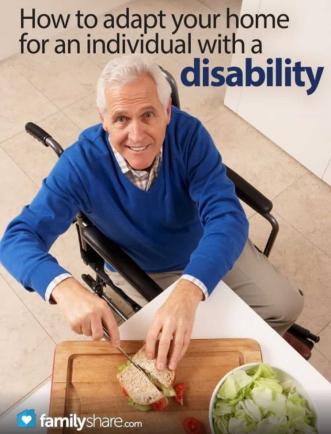
Before making arrangements to retrofit your home to the needs of someone with a disability, first find out from the individual, exactly how to retrofit your home to his or her specific needs.
My family decided to remodel my bathroom and put in a shower instead of leaving the bathtub. My sister, instead of asking me what she needed to buy, went out and bought a regular shower head for the contractor to use. I need a shower head with a wand that can be removed so that when I sit down I can use the shower head. That meant she had to return the shower head and order a new one. This time, instead of going on her own, she took me with her and I showed her what I needed.
If you are unsure of what needs to be done to make your home more accessible, ask a contractor. Under the Americans With Disabilities Act (ADA) and the Accessibility Guidelines for Buildings and Facilities (ADAAG) there are specific guidelines for retrofitting a home for someone with a disability. Store employees may also be able to make suggestions or have a booklet or catalog that you can order the parts from.
Accessibility
is determined by the type of disability.
Adaptations for the blind
Braille Typewriter is a special machine that codes out letters that are raised so that someone who is blind can read by touching the letters. Every member in the family should know how to use one so when they're apart they can communicate with the person who is blind.
Adaptations for the deaf
A Teletype device
(TTY) can be placed on your phone and used with the relay system where a hearing person can communicate with someone who is deaf. They type in the message and the intermediary tells the hearing person what they are saying and vice versa.
Computer adaptations
JAWS for Windows
is a software for computers that someone who is blind can use because it reads back to them what is written.
WebAIM is a software program that converts text into synthesized speech for someone who is blind.
ScreenReader is another software program for someone who is blind that converts text into speech.
Settings
on the computer can magnify text for someone who has limited visibility and can't read small print.
Dragon Naturally Speakingis a speech to text voice recognition software used by someone with a physical disability to do his typing for him. You have to train the software to recognize your voice to use it properly.
Adaptations for limited mobility
ADAAGputs out an Accessibility Guidelines for Buildings and Facilities book. This document should be referenced when retrofitting a home for someone with a physical disability. There are specific dimensions to follow when widening doors in a home or putting in ramps. Don't forget to replace knobs with handles.
Ask for specific needs
When remodeling a home for someone with a disability, make sure you ask them what can be done to meet their needs because each individual's needs are different.
For example, I have Cerebral Palsywhich affects only my right side. I had to tell the contractor what changes should be made to meet my needs. When he replaced the old door knobs with new ones, I told him to get handles. Since I can only use one hand, handles work best. If I'm carrying packages, I can't turn a knob with my right hand but I can use a handle to slip my hand in and push the handle down to open the door.
Accessible bathrooms
have wider doors and space for someone who uses a wheelchair or has mobility problems. There are bars specifically located for someone to hold while lowering themselves onto the toilet seat.
Wheelchair lifts for stairs
can be an option for your home if you have stairwells that someone can no longer navigate on her own. Many companies install lifts along the railing for someone to go up and down the stairs without help.
These are just a few things to consider when retrofitting a home to accommodate someone with a disability.

